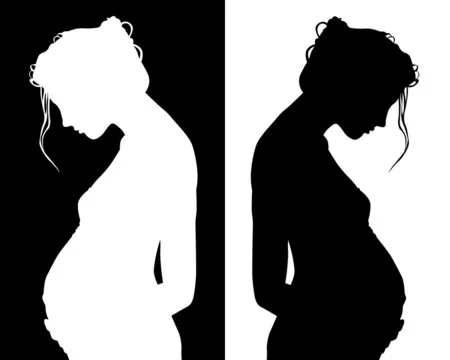Recently, I found myself in a conversation with another mom and writer, which began with me sheepishly admitting to the chaotic state of my home. Before I knew it, we were competing on who could share the most shocking tidbits about our lives. By the end, I felt pretty confident that I had taken the crown. And that’s when it hit me: I have a bit of a peculiar habit.
Yes, I seem to be cultivating a collection of placentas.
It all began when my partner and I enrolled in prenatal classes led by a wonderfully eccentric doula. There’s likely a prerequisite amount of “hippie” to possess if you’re going to be a doula, and our instructor embodied this spirit wholeheartedly. This was perfectly fine, as the other expectant parents in the room shared a similar vibe—we were all opting for midwife-assisted births, with a couple even planning home deliveries. So, when our instructor introduced the idea of placenta encapsulation, we were all ears.
“Placentas are packed with nutrients that support your baby during pregnancy!”
“Your body is accustomed to these nutrients, so it makes sense to gradually wean yourself off of them instead of discarding them after birth!”
“We’re the only species that doesn’t consume our placenta after giving birth!”
Hmm, sounds reasonable enough.
For some inexplicable reason, I found myself oddly attached to these encapsulated remnants of my body. That placenta was a vital organ I created to nourish my daughter. Tossing it seemed unfathomable.
Coincidentally, our instructor offered a placenta encapsulation service that seemed genuinely appealing. She was a master at selling the idea, and before long, every expectant mother in our class had signed up for the process. This involved steaming the placenta with traditional Chinese herbs and dehydrating it—how exactly, I still don’t want to know. The aim? To ease postpartum challenges and combat the baby blues.
What I didn’t foresee were the unexpected bonuses that accompanied my order of placenta capsules.
A tincture to help with teething? Great! Placenta water? Why not! The artistic keepsake, essentially a blood print of my placenta on paper? Fascinating. I could frame that and pass it off as modern art. And look! My dehydrated umbilical cord, crafted into the shape of a heart and nestled in an organza bag. Okay, that one was just plain weird.
But all for a good cause, right?
For several weeks, I took those capsules enthusiastically. I was struggling with breastfeeding, and I prayed to my “placenta fairy” for help. Then, I was struck down by mastitis, which knocked me out for a while. When I finally got back to taking the pills, my motivation had evaporated. I admit, I often struggle with follow-through.
So, those capsules sat untouched on my counter for three long years. My partner was less than pleased about the $100 I’d spent on these body-part pills that I wasn’t even using. Every few months, he’d glance at them, shake his head in disappointment, and I knew he was thinking I should just toss them. But instead of getting rid of them, they became a constant reminder of my “investment,” their little eyes staring at me from the jar, judging my choices.
Yet, I couldn’t bring myself to part with them. That placenta had been a source of nourishment for my daughter.
Fast forward nearly three years, and I welcomed my second child, a boy, at home. It sounds more granola than it truly was, but if you’re accustomed to epidurals, giving birth on a pullout couch with no pain relief is the peak of “hippiness.” After delivering my hefty 9-pound baby, the midwife asked if I wanted to see the placenta. Apparently, it was just as large as my baby!
When she inquired about what to do with my “monster” placenta, I hesitated. I wasn’t keen on paying another $100 for capsules, but tossing it seemed unthinkable. Exhausted and dazed, I accepted the midwife’s suggestion to place it in a Tupperware and freeze it until I could decide.
And so, there it remains—a year and a half later.
Every few weeks, while searching for something to defrost for dinner, my gaze inevitably falls on that ominous container in the corner of the freezer. I wonder, “What’s in that Tupperware… oh right, my placenta.” But I never take action. I can’t just discard it.
I do worry about the day my mom swings by and decides to whip up a stew with the “mystery meat” she finds in our freezer. I can picture it now: my dad and husband chewing on a piece, while my mom exclaims that it should be falling apart by now. And there I’ll be, in my chair, torn between disgust at the thought of them consuming my placenta or relief that it’s finally being put to use.
If you’re interested in learning more about unique experiences surrounding pregnancy, check out this post on Cervical Insemination. And if you’re considering insemination options at home, check out Cryobaby for their at-home insemination syringe kits. For a deeper dive into fertility treatments, UCSF’s IVF Resource is an excellent place to start.
In summary, my journey with placenta encapsulation has been a bizarre one, filled with unexpected turns and humorous reflections. From the initial enthusiasm to the prolonged freeze, it’s a reminder of how unconventional motherhood can be.

Leave a Reply